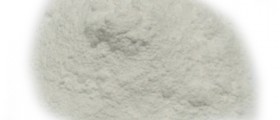
Mesothelioma is an aggressive type of cancer that affects the linings of the lungs and abdomen. Mesothelioma is considered one of the most dangerous asbestos-related diseases. This is a rare form of cancer that develops on the protective lining of the internal organs, known as mesothelium. In most cases, this disease results from asbestos exposure, but it has also been associated with many other possible causes. Mesothelioma is usually found on the pleura, the outer lining of the lungs and internal chest walls. Asbestos occupational exposure is the most serious risk factor for this disease. Exposure to asbestos significantly increases one’s risk of contracting mesothelioma. Other known risk factors include exposure to radiation, zeolite, simian virus 40 (SV40) and erionite.
Exposure to asbestos
Asbestos was once used in numerous different industrial materials to enhance their strength and resistance. Asbestos fibers are microscopic and invisible to human eye. These particles are becoming airborne when something disturbs the solid material (during reconstruction of a building, for example). When inhaled, asbestos fibers lodge into lungs and within the mesothelium. Asbestos irritates the tissues over time, causing inflammation and scarring. The scar tissue plaques are the foundation of the mesothelioma tumor. Sometimes it can take up to 50 years for this process to complete, and signs and symptoms of mesothelioma are typically visible only after many decades.
Radiation exposure
A substance known as Thorium dioxide (Thorotrast), once used in x-ray tests, is possibly associated to pleural mesothelioma (in the lining of the lungs) and peritoneal mesothelioma (in the lining of the abdominal cavity). Radiation is known to disturb normal cell growth patterns, and therefore it is one of the possible causes of mesothelioma. This is a relatively rare cause and usually attributed in cases where patients have not been exposed to asbestos during their lifetime, but they have been exposed to radiation.
Zeolite exposure
Zeolite is a silica based mineral that has similar chemical properties as asbestos. This mineral is found in soil of certain parts of the world, namely Anatoli region within Turkey. Some mesothelioma cases are explained by this link.
Simian Virus 40 (SV40)
Certain scientific studies have confirmed presence of the Simian Virus 40 (SV40) in the mesothelinoma cells. The relationship is still unclear and further research is being conducted to explain this link.
Erionite exposure
Similarly to zeolite, erionite has many properties that match to those of asbestos. People living near the eronite deposits have historically been at the higher risk of this disease and there are several documented cases of mesothelioma caused by erionite exposure.

















Your thoughts on this
Loading...